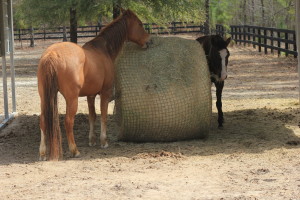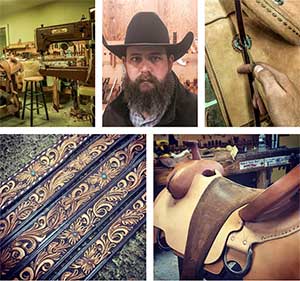Tack & Farm
Our Tack & Farm section features an Apparel section to find both practical and fashionable riding attire. If you ride English & Western or Race, many sources are available in the Tack section.
Building a barn? Need an architect for your equine dream home? Find one in Barns & Stalls.
Have a hungry horse? Of course you do! Find a place to buy your feed and tuck your horse in at night in the Bedding & Feed section. Looking for a place to keep your horse? You can find it in the Horse Boarding section. Keep your horse happy and beautiful with resources in our Grooming section.
Traveling? Find a Shipping company or Horse Sitting service if your horse is staying home!
Running and maintaining a farm or stable is a continuous effort, and to help find products or tools you need, please see our Equipment, Fencing and Management Tools sections.
Seeking Services? Find financial and tax expertise in our Accounting section. Companies who will help protect your investment are found in the Insurance section. For those who want legal advice about purchasing, liability, and other issues, please look at the Equine Law section to find an expert. Build and promote your business with teams from Marketing / Videography / Web Design.
Do we need to add more? Please use the useful feedback link and let us know!

by Juliet M. Getty, Ph.D.
Forage is the foundation of every equine’s diet and needs to flow steadily through the digestive tract. Gaps without forage can lead to ulcers, colic, behavioral issues, stall vices, gorging, choke, cribbing, and even laminitis. Truly, the only way to avoid these problems is to allow your horse steady access to forage, free-choice, all day and all night.
Responding to this inherent need is the slow-feeder industry. The purpose of this article is to provide a clear understanding of slow-feeders and how they can be used safely and effectively. There are many styles and types from which to choose. . The best approach is to contact several manufacturers to see which product best meets your horses’ needs.
The purpose of a slow-feeding system is to simulate grazing. Horses in a natural setting eat small amounts of forage as they wander in search of the next tasty morsel. They eat virtually all day and night, taking time to socialize and rest every so often for a few minutes at a time. When they know that they always have access to forage, they become calm and relaxed, rest more often, and walk away from their hay, knowing that it will still be there when they return. In other words, they “self-regulate” and eat only what they need to maintain a healthy body condition.

by Gene Fowler
Texas saddlemaker and leather artist Don Gonzales is living proof of the benefits of a family that encourages creative expression and exploration. “I grew up in the Aransas Pass and Refugio area,” he says, “down along the coast, and we had a very creative household. My mom is a nurse who creates artwork out of gourds, and my dad, who passed away in 2013, was always tinkering….like me, I guess,” he adds with a laugh.
Young Don drew things, recreating the comic books he compulsively read like most kids. And that hand-eye skill, over time, became innate. It proves invaluable today in the hand-tooling he embeds on saddles, belts, book covers, and rope bags and cans. The instructional videos he creates for his 25,000+ YouTube subscribers reveal a man who teaches with contagious enthusiasm.
Read more: Don Gonzales: Texas Saddlemaker, Leathercraft Teacher

Working with horses is one of the most rewarding and exciting jobs a person can have, though it also takes a lot of hard work and dedication. No matter how well you run your business or how good your facilities are, if you are not correctly marketing and advertising your Equestrian Center, then you could be missing out on some great opportunities to bring in more customers and generate more money for your business. If you are struggling to think of ideas of how you can attract more clients to your center, then here are four simple advertising and marketing techniques which may work for you.
Professional Photography
If you want to make sure you are creating a business that stands out from the rest, then professional photography is an important marketing tool. The quality of your photography is often considered indicative of the quality of your business. So, if you want people to know that you are the best local center, it is important that you have some high-quality photos to sell that idea to your target audience. Hire a photographer to come in and take pictures of your site, facilities, and equipment, as well as your horses and also your clients interacting with the horses too.
Be Active On Social Media
Most companies, no matter which industry they are in, rely on social media presence to market their business. Having an active social media presence on at least one or two platforms will bring increased interest to your business. For an animal based business, Facebook and Instagram might be two sites to consider. Facebook attracts people who are looking to learn more about your business, whereas Instagram is best for posting visual content that will draw people in, allowing people to feel they have gotten to know you and your horses on a more personal level. It is creating this connection with your audience which will help you bring more visitors to your center.
Read more: 4 Ideas for Advertising and Marketing Your Equestrian Center

by Sarah Nash
Having a mare stand in a stall for 16 hours per day to facilitate light therapy is not the best option for her fertility. Horses are migratory herd animals that in the wild walk up to 100 km a day. Mares are less stressed and show improved uterine tone when at grass in herd environments and constantly moving. Grazing behaviour allows the natural clearing of fluid from the uterus which can be a common source of sub-fertility in many barren mares.
Our advice to breeders is to try to maintain mares as close to their natural condition as possible – outdoors, as groups at pasture, with freedom to move and express normal patterns of behaviour. Reduce stress wherever possible, provide good quality forage and access to ground- temperature water. Mares naturally want to move more in the weeks before and after foaling. Many dystocia’s could be prevented by allowing them plenty of room to exercise. Exercise helps the foal reposition itself so that foaling can occur smoothly. Exercise after foaling helps the mare’s uterus to return to a normal size and helps with the elimination of any fluid.
- Horizon Structures Presents: Barn Color Choice Matters
- Only Skin Deep? That Old Chestnut of Saddle Fitting – and Chestnut Horses
- This Saddle Is the Answer to My Prayers!
- Horse Barn Warranties Matter
- Equilume research shows Blue Light reduces bacterial and fungal growth
- An Old Horse Barn is Transformed into a Guest House
- Planning for a Hobby that Costs Almost as Much as Children
- Protecting Your Ideas: Can You Do It with Copyright and Trademark Law?
- Is There a Difference Between a Mule Saddle and a Horse Saddle?
- Is a Treeless Saddle Right For You?
































